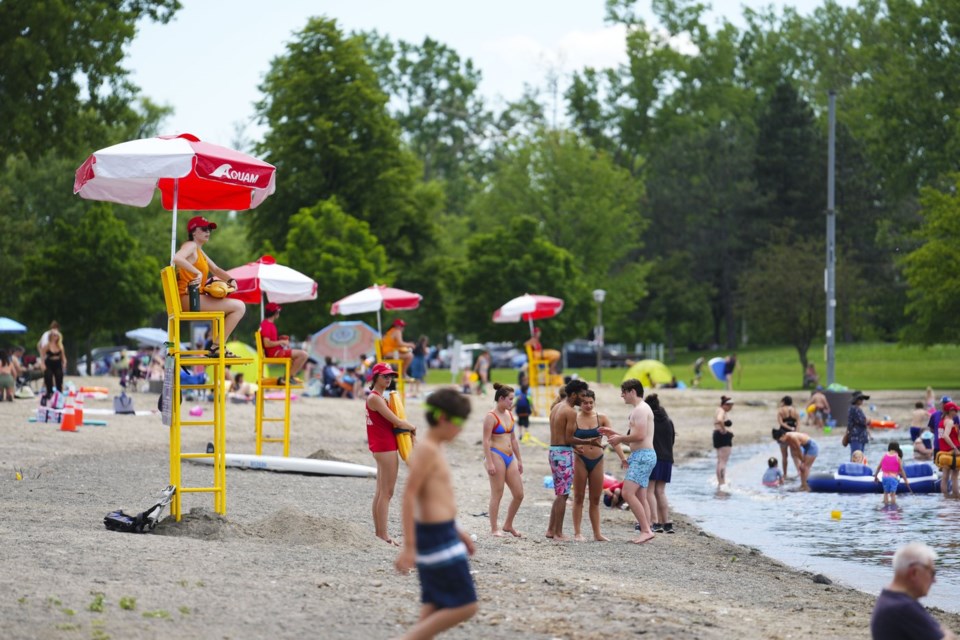TORONTO — A new study says an average of seven people in Canada die each year trying to save another person from drowning.
The researchers found that 74 people drowned between January 2010 and December 2019 after attempting a rescue in the water.
"Intervening when there is a drowning incident is critical to the outcome of the person who started drowning. However, it's really important to do that safely," said Tessa Clemens, a co-author of the study and a researcher with the Drowning Prevention Research Centre Canada and the Lifesaving Society of Ontario.
The Lifesaving Society released the study, which was first published in the BMJ in June, on Thursday because there has been a recent surge in drownings in Ontario and Quebec, said Stephanie Bakalar, the society's senior communications officer.
"In particular, we have heard of many instances of bystanders attempting rescues this summer and then becoming victims themselves," Bakalar said in an email, noting they wanted to raise awareness about drowning prevention before the August long weekend.
Clemens and her colleagues examined 4,535 fatal drownings over the 10-year period and found that in more than half of those cases, someone tried to rescue them.
Most of those hundreds of rescuers did not have any lifesaving training, but frequently risked their own lives by trying to grab the drowning person in the water.
Clemens said rescues involving getting in the water with the drowning person and trying to carry or tow them to shore should only be done by those who have taken some rescue training.
Lifesaving training teaches people how to approach a drowning person and help them without getting pulled underwater themselves, she said.
In addition to the risk of getting pulled under, people tend to overestimate their own swimming ability in lakes, rivers and oceans, Clemens said.
"Being able to swim in a pool can be very different than swimming in a natural water setting during a high-risk situation where somebody is in distress," she said.
"Most drowning in Canada does happen in natural water."
People who haven't had lifesaving training should try a "non-contact rescue," including calling for help and throwing a life-jacket, ring buoy, floating toy or another buoyant object for the person to grab on to. They can also call out to the person and encourage them to swim toward them.
If someone is on shore or by a pool and sees someone drowning, they can lay flat on their stomach and reach a pole or another object out toward the person, but only if they are confident they won't be pulled into the water.
Clemens said the majority of the 74 rescuers who drowned knew the person they were trying to save, but some were unrelated bystanders.
Many attempted rescues involve parents trying to save their children, Clemens said, so the instinct to do whatever it takes to save them is intense.
She urges parents and caregivers to avoid ever being in that situation by never taking their eyes off their kids and staying within arm's reach when they're in the water, as well as putting up fences around backyard pools to prevent children from entering the pool area unsupervised.
Clemens also said people should swim where there are lifeguards whenever possible and everyone — both adults and children — should wear a life-jacket while boating.
She said everyone should know how to swim and that adult courses, as well as basic lifesaving training, are available through the Lifesaving Society.
This report by The Canadian Press was first published July 31, 2025.
Canadian Press health coverage receives support through a partnership with the Canadian Medical Association. CP is solely responsible for this content.
Nicole Ireland, The Canadian Press



